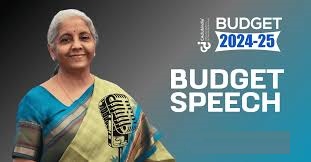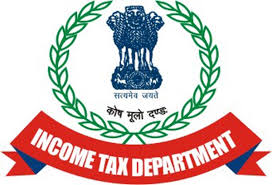
The Union Budget for FY 2024-25, presented by Finance Minister Nirmala Sitharaman, brings several significant changes aimed at boosting the economy, simplifying tax structures, and promoting sustainable growth.
Here are the key highlights:
=====================
1. Revised Income Tax Slabs:
➤Finance Minister Nirmala Sitharaman announced a thorough review of the Income Tax Act of 1961 to benefit the middle class, expected to be completed in six months.
➤ The new tax regime includes revised tax slabs:
- No tax up to Rs 3 lakh income
- Rs 3 -7 lakh 5 per cent
- Rs 7-10 lakh 10 per cent
- Rs 10-12 lakh 15 per cent
- Rs 12-15 lakh 20 per cent
- Above Rs 15 lakh 30 per cent
➤ The Standard Deduction under the New Tax Regime increased from Rs 30,000 to Rs 75,000, saving Rs 17,500. The family pension deduction for pensioners rose from Rs 15,000 to Rs 25,000.
Announcements for STT, Short-term and long term capital gains:
➤ Capital gains taxation has been streamlined with short-term gains reduced to 20% and long-term gains to 12.5% for specific assets. Capital gains tax will now also apply to unlisted bonds and debentures.
➤ The Securities Transaction Tax (STT) on option sales has increased from 0.0625% to 0.1%. The STT on futures and options (securities has been raised by 0.02% and 0.1%, respectively.
➤ The indexation benefit for immovable assets, like real estate, has been removed, meaning property sellers can no longer adjust their purchase price for capital gains tax. Although the long-term capital gains (LTCG) tax on immovable properties has been reduced from 20% to 12.5%, indexation benefits are no longer available.
➤ The TDS on e-commerce transactions has been reduced from 1% to 0.1%.
➤ The angel tax has been abolished for all investors…
➤ Employer NPS deduction increased from 10% to 14%.
➤ A new solution for NPS (Central Government employees) will be developed based on a review committee’s recommendations.
➤ Assessment Rules: Reopening and reassessment rules have been relaxed. Assessments can now be reopened beyond three years only if undisclosed income exceeds Rs 50 lakh, with a maximum reopening period of five years from the end of the assessment year.
➤ Indian Professionals: Indian professionals working for multinational companies will no longer face penalties for not reporting movable foreign assets, such as ESOPs, if their value is up to Rs 20 lakh.
2. GST Updates
The budget introduces several changes to the Goods and Services Tax (GST) framework. These include waivers of interest and penalties for non-fraudulent demands from FY 2017-18 to 2019-20, provided certain conditions are met. This move aims to ease compliance and reduce the burden on businesses.
3. Fiscal Deficit and Economic Growth
The fiscal deficit is projected to reduce to 4.9% of GDP, with a commitment to further decrease it to 4.5% in the coming years. This disciplined approach is expected to enhance investor confidence and ensure sustainable economic growth.
4. Support for MSMEs and Startups
The budget allocates substantial funds to support Micro, Small, and Medium Enterprises (MSMEs) and startups. New loan schemes and financial support initiatives are introduced to foster innovation and entrepreneurship, which are crucial for job creation and economic diversification
5. Infrastructure Development
Significant investments are planned for infrastructure projects, including transportation, energy, and digital infrastructure. These projects aim to improve connectivity, reduce logistics costs, and enhance the overall business environment.
6. Agricultural Sector Boost
The agricultural sector receives a major boost with increased funding for various schemes aimed at improving productivity, ensuring fair prices for farmers, and promoting sustainable farming practices
7. Customs Duties and Capital Gains Tax
The budget also includes changes in customs duties to promote domestic manufacturing and reduce dependency on imports. Rationalization of the capital gains tax structure to simplify the tax system and encourage investments.
8. Corporate Tax:
➤ Reduction of the corporate income tax rate on foreign companies from 40 % to 35%.
➤ Introduction of measures to streamline transfer pricing assessment procedures.
9. Angel Tax and Equalization Levy:
➤ Abolition of the angel tax to support innovation and startups.
➤ Repeal of the equalization levy to simplify the tax landscape.
10. Reassessment Provisions:
➤ Simplification of reassessment provisions, allowing assessments to be reopened beyond three years, up to five years from the end of the year of assessment, only if the escaped income is more than ₹50 lakh.
➤ In search cases, the time limit for reassessment has been reduced from ten years to six years.
11. Indirect Tax Procedures:
➤ Simplification of indirect tax procedures to reduce compliance burdens and improve efficiency.
12. Vivad Se Vishwas Scheme:
➤ Introduction of the new Vivad Se Vishwas Scheme, 2024, for the settlement of pending direct tax disputes.
Conclusion
The Union Budget for FY 2024-25 reflects the government’s commitment to fostering economic growth, simplifying tax structures, and supporting key sectors. These measures are expected to create a more resilient and inclusive economy, benefiting all sections of society.





